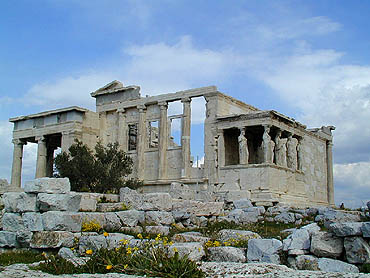
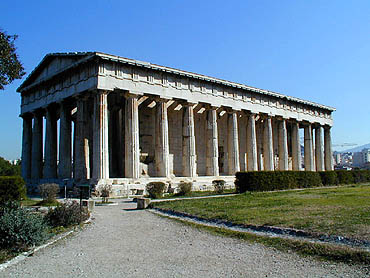
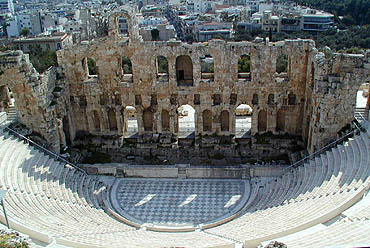
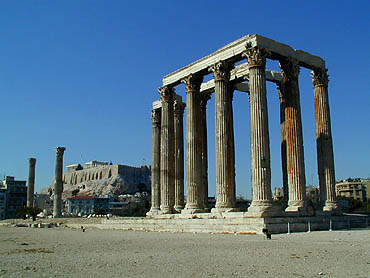
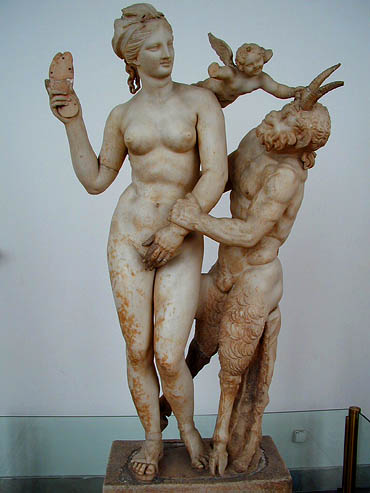

We continued our pilgrimage to the sacred grounds of dominant civilizations. The Odyssey, the oracles, and ancient Olympic games came to life as we stood upon the locations of these epic events. The myths of happy gods, inclined to the same folly as normal human beings and engaging in the pleasures of life, stimulated our body and mind. We ate and drank, laughed and indulged, made merry and loved, and we weren't sinners. Oh, the pleasures of ancient Greece!!!
Steeped in the rebirth of spring and blessed with beautiful weather, we sailed around the country like Apollo on his flying horse Pegasus. In Athens, we stayed in the charming, always lively old town, close to all the historically significant locations. On winged feet we visited the Acropolis, the Theater of Dionosys, Roman Agora, Athenian Agora, the Olympic Stadium of modern times, Temple of Olympian Zeus, Hadrian's Library, and the Archeological Museum (see pictures below). Foods and wine were delicious and cheap. Each evening we went to Brettos for homemade schnapps and brandy (pictured bottom right). The brilliance of the ancient Greeks shown brightly in Athens.






Sick and disturbed ancient Greeks traveled to Epidavros to treat their ailments, relax their troubled minds, eat well and enjoy the beauty of nature. Priests analyzed the patients' dreams to unravel the cause of the illness. The invalids also brought offerings to the shrine of Asclepios, revered as the god of healing. The multi-acre complex, comprised of healing chambers, temples, housing complexes and baths, spreads on a gorgeous, secluded wooded site surrounded by gentle mountains. The ancient Greeks used entertainment and sports as means of healing. Therefore, the ancient spa site included a stadium and a large amphitheater, today one of the best preserved outdoor theaters of this period (pictured below left).

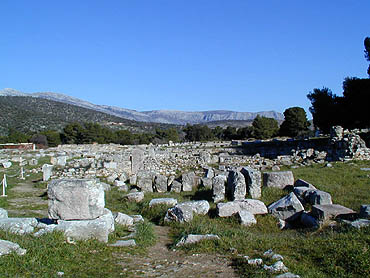
The delightful town of Nafplion (pictured below left) grew around two medieval fortresses that sit on top of a mountainous peninsula extending into the Mediterranean Sea. We decided to remain for a few days, hike to the fortress, walk along the charming streets, harbor and cliffs, and then visit the nearby ruins of ancient Mycenae. The Mycenaeans were one of the oldest Greek civilizations that existed around the same time as Crete. The location and time period of this powerful kingdom, their building and craft skills etc. coincide with Homer's Odyssey, which has caused scholars to consider the myth's factual merit. The impressive beehive shaped burial chambers (pictured below right) contained many precious gold artifacts. The fortress is surrounded by thick yellow-brown walls built of huge stone blocks.
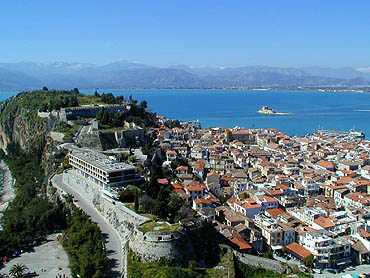

Ancient Olympia hides among the forests of an isolated low mountain area. We arrived in the afternoon and found the park-like site empty and quiet. The games of antiquity commenced every four years for over 1,000 years without interruption. Standing amongst the ruins and inside the original olympic stadium (picture below left shows its entrance gate), we imagined the glory of these events and saw the gorgeous athletes competing for honor and a simple laurel wreath. The grounds and ruins are preserving such a peaceful, significant spirit.


It is easy to understand why the ancient Greeks considered Delphi the center of the world. Situated on the slopes of a spectacular mountain peak, this striking natural amphitheater of steep rock tiers was selected as the location for the Sanctuary of Apollo. All the Greek city states built treasuries on the site and within them deposited sacrificial offerings to the gods. Votive monuments and sculptures expressed wealth and power. The buildings of the sanctuary climbed up the mountain in an organized fashion, starting with the treasuries, followed by the Temple of Apollo (where the priests passed on the words of the oracle) and the amphitheater (picture left). On top, in a peaceful setting of pine trees and rock walls, stands the impressive u-shaped stadium where the Pythian Games were held.


Earthquake activity and erosion created the giant stalagmite formations at Meteora. Like towers they rise off the plain to heights of 1,000 feet. In the 14th century a group of monks erected the first monastery on the rocks in order to be closer to God and to keep out unwelcome guests. A total of 24 monasteries were built in the years to follow. Although most were constructed on top of the huge monoliths, some hermitages are hiding in natural caves that rainwater had carved into the soft stone. The monks used to reach the buildings by climbing simple rope ladders. Visitors are now able to reach the religious sites via stairs, bridges and paved walkways. Only five monasteries are currently inhabited. The monks practice a devoted, ascetic life style, ancient crafts and religious traditions.
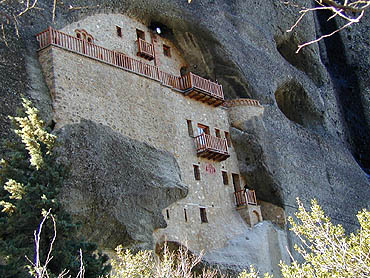
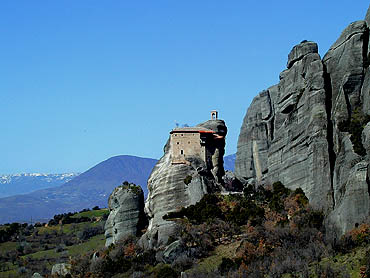
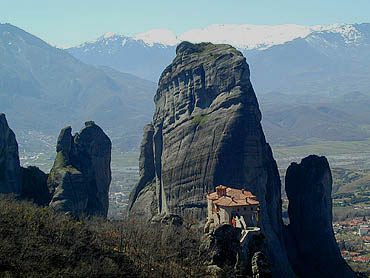
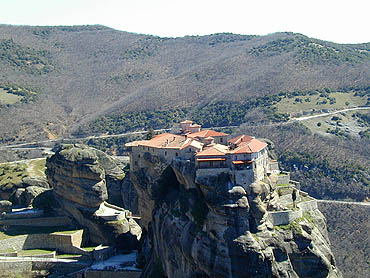
We had entered Greece with few well known pictures in mind: The magnificent temple of the Acropolis rising from a steep hill in the middle of crowded Athens. The remaining columns of ancient sanctuaries in Olympia and Delphi. Slices of feta cheese on ripe tomatoes, fresh cucumbers and shining olives. But Greece charmed us with countless surprises: The bustling splendor of Athens' old town with its tiny shops and tavernas along narrow marble paths. The sight of majestic, snow-covered peaks rising above the tough, sparsely populated, always changing landscape. The hidden, rough mountain villages with their white houses, a maze of winding, beaten pathways, and a loud gathering of wrinkled old men playing cards on outdoor tables. The perfection carved into the sensuous bodies of antic sculptures. The size and elegance of a few towering temple pillars among blooming meadows and bright mountain cliffs ... ... The beauty of Greece will keep you divine company!